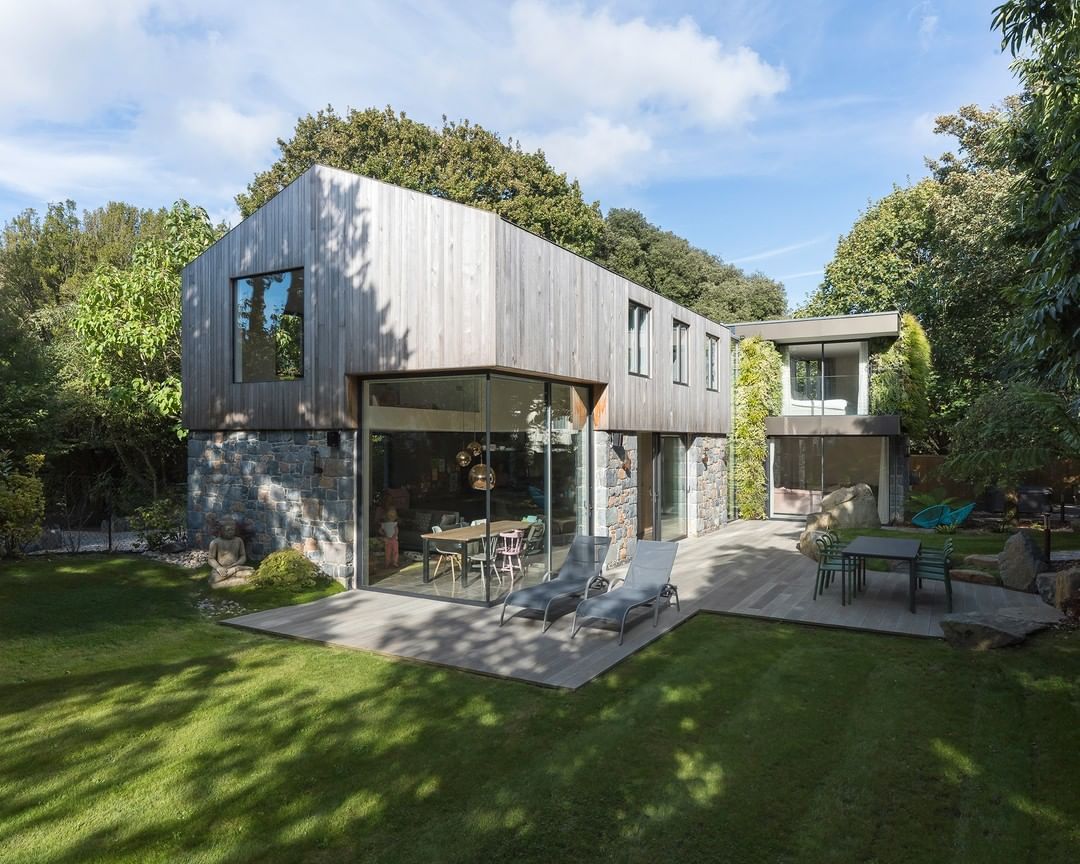#12720. Dual-material facade: modern house with stone and wood combination
The modern country house presented here demonstrates an expressive example of harmonious combination of natural materials in architecture. The facade is organized as a composition of two contrasting blocks: the lower level is finished with irregular natural stone, creating a solid foundation and connection with the surrounding landscape, while the upper volume is clad with vertically oriented light-colored wooden panels, giving the structure lightness and modernity.
The large panoramic windows on the ground floor add particular expressiveness to the facade, providing maximum connection between the interior space and the garden. The building's geometry represents a play of rectangular volumes of different heights, creating a dynamic silhouette. The vertical lines of the wooden cladding visually stretch the building, making it more slender.
The design shows a tendency towards biophilic architecture—the right wing of the house is partially covered with vertical greenery, which enhances the integration of the structure into its natural surroundings. The terraced area with wooden decking and minimalist garden furniture organically extends the interior space of the house, creating a smooth transition between interior and exterior.
When designing your own facade, you can adopt several successful techniques: combining contrasting natural materials (stone and wood), using large glazed areas to enhance the connection with the environment, vertical greenery as an element of ecological design, as well as playing with volumes and textures to create a visually interesting architectural composition.
